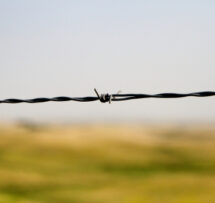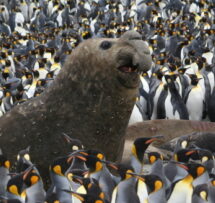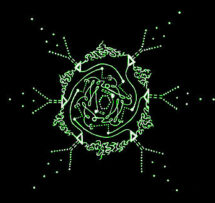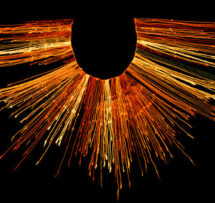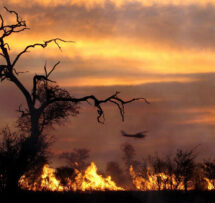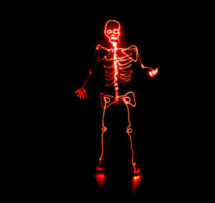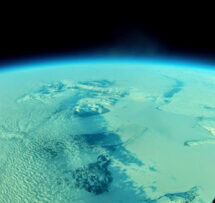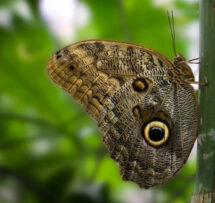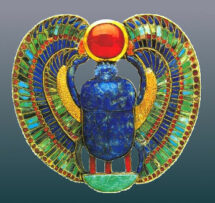Earth's oxygen revolution

Earth environments, life and mineral deposits before and after the Great Oxidation Event
What is the history of breathable oxygen on Earth? When did the mechanism of oxygenic photosynthesis develop? If it was already in existence in primitive oceans very early in the planet's history, about 3,85 billion years ago, why did it take 1500 million years for the atmosphere to become oxygenated? And why is South Africa an ideal place to study these questions?
Earth's Great Oxidation Event (GOE) happened around 2320 million years ago when the atmosphere transformed permanently from methane-rich reducing (essentially oxygen free) to oxidizing (containing significant free oxygen).
From a human perspective, it is certainly the most important event that ever took place in Earth’s history as it made life on land possible for oxygen-breathing microbes (known as eukaryotes) which are our most primitive forefathers. It is thus probably fair to say that it laid the foundations for the "Deep History Cradle of Humankind". This phrase is very appropriate, because as South Africa hosts the "Cradle of Humankind", it certainly also hosts some of the most complete and best preserved geological formations in the world from which the nature and timing of the GOE, as well as paleo-environmental conditions leading up to and following on it, can be researched.
Although the existence of the GOE is now generally accepted, there is much debate about the exact nature and timing or duration of the event, the processes that led up to its development, as well as the chemical conditions in the ancient oceans prior to and following the event. One of the questions being researched at present is whether the GOE took place very rapidly in a short time interval, in step-like fashion over a longer time interval, or whether it was preceded by short, discontinuous, and most probably non-global spikes of oxygen-generating conditions related to local oxygen oases in the pre-GOE oceans. A basic question that relates to all of the above, and that remains unresolved, has to do with the amount of free oxygen that was available on Earth prior to the GOE.
There is only one known mechanism that can produce a large and effective flux of free oxygen to surface environments on Earth: oxygenic (oxygen-producing) photosynthesis, as for example by cyanobacteria (blue-green algae) which are the most primitive known oxygenic phototrophs. The question then becomes: when did the modern oxygen-generating life cycle become established on Earth? One school of thought is that it only came into existence during the GOE, and was actually the cause of the event, while the other is that it was already in existence very early on in Earth's History during deposition of some of the oldest relatively well preserved sedimentary rocks on Earth, including iron formation, at Isua in Greenland about 3,85 billion years ago (with Earth having formed about 4,4 billion years ago).
It has long been thought that the presence of free oxygen, derived from oxygenic photosynthesis, was the only way to account for the types of minerals (in particular, those containing oxidised ferric iron) found in these ancient formations. This changed in the 1990's with the discovery of anaerobic iron-oxidising (rust-producing, or "ferrigenic") photosynthetic microbes. The possibility thus exists that prior to the GOE, the life cycle on Earth was based on ferrigenic rather than oxygenic photosynthesis as we know it today.
In tonight's session of Science & Cocktails, Prof. Nic Beukes will discuss how sedimentary studies can be applied to determine which of these two life cycles were dominant in times prior to the GOE. After explaining what is the economic significance for the mineral industry of correctly defining the nature and timing of the GOE, he will give
us insight into the fascinating problems currently being researched with the participation of the CIMERA research team, which is involved in several scientific drilling projects, such as in the Northern Cape in search of biomarkers that could indicate the existence of oxygen-breathing microbes in oceans prior to the GOE.
Afterwards, photosynthetic cocktails at the bar, to the oxygenating sounds of the Asah x Viwo ensemble.
Image: seashells embedded in a algal-green ocean floor (Robert Nunnaly/Flickr)
Talk by
Nic Beukes
Nicolas J Beukes is Professor of Geology and Director of the Centre of Excellence for Integrated Mineral and Energy Resource Analysis (CIMERA) at the University of Johannesburg. His specialty is sedimentology and stratigraphy, including the study of the origin of iron and manganese ore deposits on early Earth and the history of atmospheric oxygen.

Music by
The Asah x Viwo Ensemble
The Asah x Viwo Ensemble's music is influenced by Xhosa folk/Bow music, urban black music and Afro jazz, so they can identify themselves as an Afrosoul/Jazz ensemble . The members are all studying music at The University of the Witwatersand. Tonight's quintet is composed of: Asah George (vocals), Viwo Kulati (vocals), Angus Hardcastle (bass), Joshua Mokoena (keys) and Thomas Nichol (drums)



